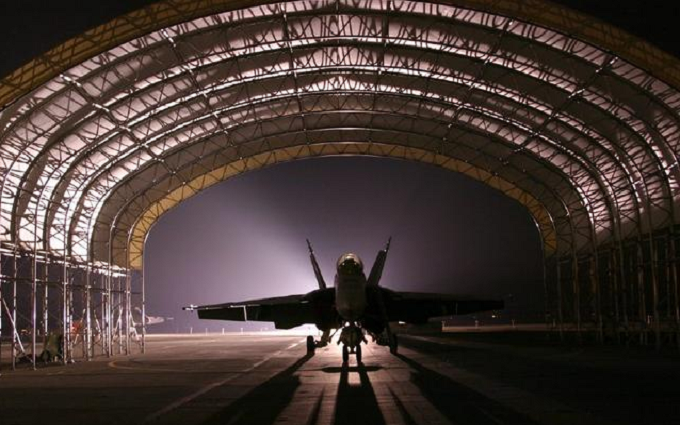Classification of Aircraft Hangars and Fire Hazard Classification

Classification of Aircraft Hangars
Aircraft hangars can be classified based on the fire compartment area of the parking and maintenance zones, functionality, and maintenance processes.

1. Classification by Fire Compartment Area
According to the national standard "Code for Fire Protection Design of Aircraft Hangars" (GB50284-2008), aircraft hangars are classified based on the fire compartment area of the parking and maintenance zones. This classification aims to ensure fire safety while reducing investment in fire protection facilities.
- Class I Hangars: Hangars with a fire compartment area of 5001-50000㎡.
- Class II Hangars: Hangars with a fire compartment area greater than 3001㎡ but less than 5000㎡, accommodating 1-2 medium-sized aircraft.
- Class III Hangars: Hangars with a fire compartment area equal to or less than 3000㎡, designed for small aircraft.
2. Classification by Functionality
Hangars can also be classified by their intended use into two types:
- Parking Hangars: These hangars are solely used for parking aircraft without any maintenance functions.
- Maintenance Hangars: These hangars provide facilities for major and minor repairs of aircraft.
3. Classification by Maintenance Process
Based on the maintenance processes, hangars can be divided into:
- Painting Hangars: Hangars used for aircraft painting activities. These hangars handle large quantities of organic solvents, flammable or combustible liquids, and explosive materials. They have specific requirements for construction, fire protection, ventilation, electrical equipment, and operational procedures.
- Non-Painting Hangars: Hangars not involved in painting activities and therefore do not need special considerations for painting requirements in terms of construction, fire protection, ventilation, electrical equipment, and operational procedures.
Fire Hazards in Aircraft Hangars
The primary fire hazards in aircraft hangars include:
1. Fuel Spills and Ignition Sources
Even after fuel extraction, residual fuel in wing tanks and other areas can exceed 1 ton. During maintenance, fuel leaks can occur, potentially spreading across the floor and igniting if a fire source is present. Rapid fuel fires can damage the aircraft skin, cause fuel tank explosions, and even lead to hangar collapse.
2. Cockpit Cleaning Fires
Cockpit interiors often use lightweight alloys, plastics, and synthetic fabrics, which are flammable. Cleaning and maintenance involving solvents, adhesives, and paints can easily ignite fires. For example, a fire at Miami International Airport on November 25, 1965, occurred during cockpit cleaning with flammable solvents, resulting in one fatality.
3. Electrical System Fires
Extensive electrical systems in aircraft and hangars can cause fires if insulation deteriorates, there is leakage, poor contact, overload, or short circuits. These conditions can generate sparks or arcs, igniting nearby combustibles.
4. Static Electricity Fires
Static electricity, especially from aviation fuel, can be generated during impacts, high-speed flow through pipes, or friction from high-resistance clothing. Accumulated static can discharge as sparks, posing a severe threat to fuel and aircraft.
5. Human Error Fires
Fires can result from smoking, careless use of fire, or arson. Non-compliance with safety procedures during activities such as painting, welding, cutting, and other hot work can also cause fires.
RELATED NEWS
- Efficient Canopy Structures: Enhancing Gas Station Functionality and Aesthetics 2024-07-05
- Gas Station Construction Budget: How Much Does It Cost to Build a Gas Station? 2024-07-04
- Eight Key Factors in Aluminum-Magnesium-Manganese Roof Design 2024-07-04
- What Are Roof Purlins? What Are the Principles of Roof Purlin Layout? 2024-07-03
- Characteristics of Hangar Tents 2024-07-03
Categories
Latest News
Contact Us
Contact: Mr.Lu
Phone: +86-51668601029
E-mail: hbktech@163.com
Whatsapp:86+15152106218
Add: 1412, Building 2, Vanke Huaihai Xintiandi, Block 3, Quanshan District, Xuzhou City, Jiangsu Province
